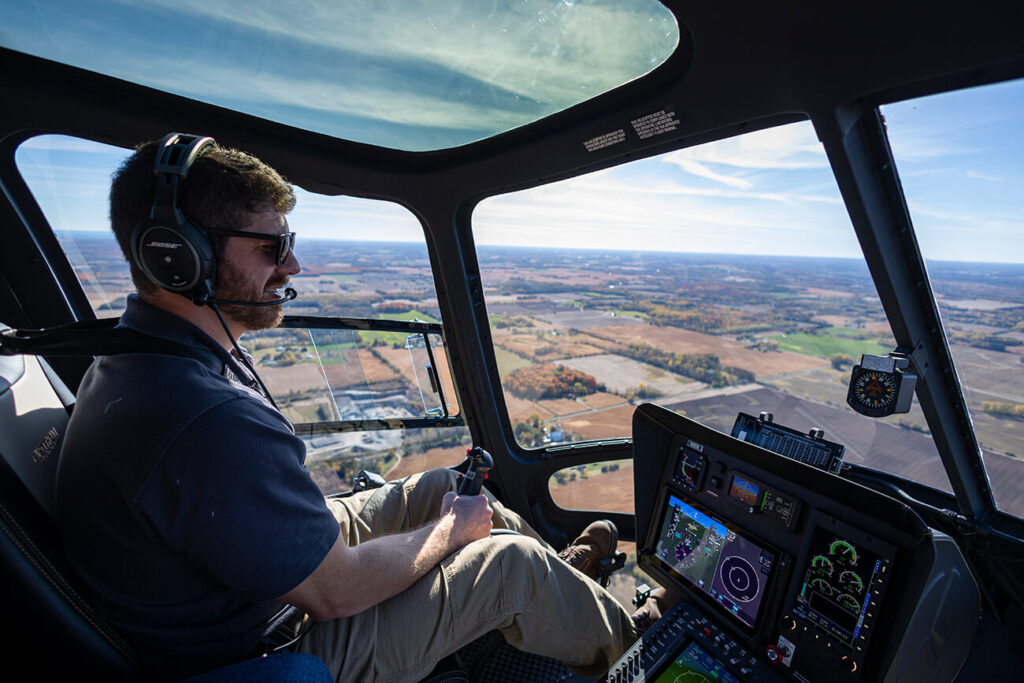An Operator’s Perspective: Enstrom‘s Crucial Role to Play

Throughout Enstrom’s 65+ year history, operators have consistently relied on the company’s incredibly versatile helicopters for nearly every mission type imaginable. Shark patrol off the coast of Amity Island, flight training lessons, military sorties around the world, photo missions, festival rides, corporate transport. The list goes on. But as important of a role as Enstrom has played over the past six decades, I believe this next decade will prove its most significant yet.
Just look at the transformation we’ve seen in only three years’ time. There was no elaborate Enstrom display booth at HeliExpo 2022. Just a few familiar faces sitting around a table. Fast forward to Verticon 2025 (or any recent trade show), and you’ll see Enstrom proudly showing off new, high-end models like the 480B Elite, and state-of-the-art features like auto pilot, avionics technology, and my personal favorite, air conditioning.
But, even with these amazing features, can a relatively niche OEM really continue to make an industry-wide impact? I’d argue that it can.
Enstrom offers customers an exceptional helicopter option that’s safe, stable, capable and maintainable, spurring healthy competition within the industry. More choice is always better for the consumer, inspiring market competitors to continue innovating and raising their own safety and performance standards. Plus, when I, as an operator, have choices in the market, it allows me to more appropriately match my fleet to my mission needs, ultimately making my business more successful.
Take the 480B out of the light turbine market, and it becomes increasingly narrow. The same can be said for the 280 in the piston market. Left with an Enstrom-sized hole, you’d find only one or two other OEM options for a new lightweight piston aircraft, which no doubt, would hurt the industry.
Enstrom has famously become an increasingly indispensable part of military training programs across the globe. The Japan Ground Self-Defense Force recently celebrated 100,000 flight hours in their fleet of TH-480Bs. And, while old partnerships are maintained, new friendships are forged. Last year, the Zambia Air Force revolutionized its fleet with the induction of two Enstrom turbine helicopters for training and utility missions.
The hard-working folks at Enstrom aren’t content to just survive in this next decade – they intend to thrive. For years, they’ve been piecing together all their ancillary offerings to build an inter-related, cohesive package, an “Enstrom-sphere” if you will, that creates value well beyond the aircraft itself for small operators. From insurance programs, robust service center networks, parts availability, and factory training support, Enstrom is committed to providing the ultimate comprehensive customer experience.
Enstrom has positioned itself to be a strong presence in the industry as a safety driver, customer service leader, new aircraft market disruptor, and business partner for operators. Not every mission requires an Enstrom, but for small operations like mine, who depend on the Enstrom-sphere for business success, we couldn’t be more thrilled with Enstrom’s continuous series of triumphs.
Jason Cutter, Ph.D is the owner of Venture Helicopters at Frankfort Municipal Airport. He is a contract pilot and former professor at a major research university, where he taught in the aviation school.
About Enstrom Helicopter
From Rudy Enstrom’s early designs in 1943 to initial testing in a Michigan Quarry in 1957 to aircraft operating on six continents, Enstrom Helicopter Corporation has maintained a reputation for safety, value and performance. Based in Menominee, Michigan and proudly made in the United States, Enstrom has a rich history for design innovation. The goal is to provide helicopters to the customer’s exact specification and deliver support and maintenance worldwide.